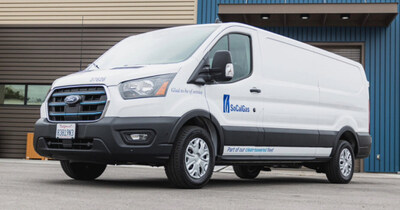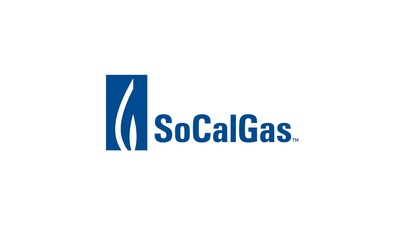SoCalGas Advances Towards Zero-Emissions Fleet with Delivery of New Ford Electric Vans
Southern California Gas Co. (SoCalGas) has integrated 21 new Ford E-Transit electric vans into its fleet, marking a significant step toward its ASPIRE 2045 sustainability strategy. This move supports SoCalGas' target to replace 50% of its fleet with alternative fuel vehicles by 2025 and achieve a 100% zero-emissions fleet by 2035. As of the end of 2023, 38% of SoCalGas' fleet was powered by low- and zero-emission energy sources. The company is also collaborating with Ford and the Department of Energy to develop a hydrogen fuel cell F-550 prototype for real-world testing in 2025. To facilitate this transition, SoCalGas is expanding its EV charging infrastructure, aiming to install 1,500 chargers across 65 sites within the next two years. This effort highlights SoCalGas' leadership in sustainability among utilities, having previously received the Leading Private Fleet Award at the Advanced Clean Transportation Expo in 2022.
- SoCalGas added 21 new Ford E-Transit electric vans to its fleet, advancing its sustainability goals.
- The company aims to replace 50% of its fleet with alternative fuel vehicles by 2025.
- SoCalGas targets a 100% zero-emissions fleet by 2035.
- 38% of SoCalGas' fleet was powered by low- and zero-emissions sources as of the end of 2023.
- SoCalGas is collaborating with Ford and the DOE on a hydrogen fuel cell F-550 prototype for 2025 testing.
- The company is installing 1,500 EV chargers across 65 facility sites over the next two years.
- SoCalGas received the Leading Private Fleet Award at the Advanced Clean Transportation Expo in 2022.
- The current low- and zero-emissions vehicles only represent 38% of the total fleet, indicating more work is needed to achieve the 2025 and 2035 goals.
- The range of Ford's light-duty electric vans is to 126 miles, which may impact operational efficiency.
Insights
SoCalGas' integration of Ford E-Transit electric vans into its fleet marks a significant step towards achieving its
In the broader context, the deployment of these vans exemplifies a growing trend among utility companies to embrace cleaner technologies. This transition is essential for mitigating the environmental impacts of traditionally high-emission sectors like transportation. Notably, the company is also supporting this transition with the installation of 1,500 EV chargers, indicating a holistic approach to sustainability.
For investors, this initiative could signal improved regulatory compliance and potential future cost savings from decreased fuel and maintenance expenditures. However, it also requires significant upfront investment and infrastructure development, which could impact short-term financial performance.
From a market perspective, SoCalGas' move to add electric vans can be seen as a strategic alignment with current sustainability trends. The market is increasingly valuing companies that adopt ESG (Environmental, Social, Governance) principles, which bodes well for SoCalGas' reputation and might positively influence its stock price. Additionally, the collaboration with Ford and the Department of Energy to develop a hydrogen fuel cell prototype indicates a forward-thinking approach to future-proofing their fleet against evolving regulatory standards and market demands.
It's important for investors to note that while such initiatives drive long-term value, they require measurable time to realize tangible financial benefits. The range of the E-Transit vans, up to 126 miles, fits well for local and regional service routes, which are critical for operational efficiency in a utility service area. Nonetheless, the integration of alternative fuel vehicles into the fleet may initially pose logistical and operational challenges, which the company needs to address effectively to realize the full benefits.
"The addition of Ford's E-Transit electric vans to our fleet represents a significant achievement in SoCalGas' advancement toward a zero-emissions future," said Sandra Hrna, vice president, supply chain and operations support at SoCalGas. "By investing in technologies powered by electricity, hydrogen or renewable natural gas, we are advancing our efforts to reduce greenhouse gas emissions (GHG) and accelerate decarbonization in a sector that has historically been a major contributor to GHG emissions."
At the close of 2023,
"I applaud SoCalGas on its efforts to accelerate the transition of its truck fleet to zero-emissions," said Wayne Nastri, South Coast Air Quality Management District executive officer. "These trucks reduce smog-forming emissions making it easier for us to breathe and they also reduce greenhouse gas emissions thereby helping our climate."
SoCalGas aims to advance sustainable transportation solutions and actively collaborates with automakers to develop innovative low- and zero-emissions options to help support California's climate goals. SoCalGas and Ford are developing a hydrogen fuel cell F-550 prototype with the Department of Energy (DOE) and, in 2025, plan to demonstrate its performance in real world conditions in an effort to help reduce GHG and nitrogen oxide emissions in medium- and heavy-duty commercial vehicles. Ford's light-duty electric vans have a range of up to 126 miles and are being used by employees to service SoCalGas' industrial and commercial customers.
"E-Transit is a great solution for companies to reduce carbon emissions while lowering fleet costs associated with fuel and maintenance," said Ted Haladyna, Ford Pro director of product marketing. "When low- and zero-emission vehicles are supported with the right infrastructure it can be a win-win for business and the planet. Testing new technology with customers early in the development process, like we are doing with SoCalGas on F-550 Super Duty Hydrogen Fuel Cell Electric Truck, is another example of how our work together will bring the alternative fuel industry forward."
To support a zero-emissions fleet, SoCalGas is installing EV chargers throughout its territory powered almost exclusively by renewable electricity under Southern California Edison's Green Rate program. SoCalGas recently added EV charging stations at its
SoCalGas is a leader among utilities in its sustainability goals and was among the first and largest natural gas distribution utilities in
Learn more about SoCalGas's sustainability efforts at socalgas.com/sustainability.
About SoCalGas
SoCalGas is the largest gas distribution utility in
This press release contains statements that constitute forward-looking statements within the meaning of the Private Securities Litigation Reform Act of 1995. Forward-looking statements are based on assumptions with respect to the future, involve risks and uncertainties, and are not guarantees. Future results may differ materially from those expressed or implied in any forward-looking statement. These forward-looking statements represent our estimates and assumptions only as of the date of this press release. We assume no obligation to update or revise any forward-looking statement as a result of new information, future events or otherwise.
In this press release, forward-looking statements can be identified by words such as "believe," "expect," "intend," "anticipate," "contemplate," "plan," "estimate," "project," "forecast," "envision," "should," "could," "would," "will," "confident," "may," "can," "potential," "possible," "proposed," "in process," "construct," "develop," "opportunity," "preliminary," "initiative," "target," "outlook," "optimistic," "poised," "maintain," "continue," "progress," "advance," "goal," "aim," "commit," or similar expressions, or when we discuss our guidance, priorities, strategy, goals, vision, mission, opportunities, projections, intentions or expectations.
Factors, among others, that could cause actual results and events to differ materially from those expressed or implied in any forward-looking statement include:
These risks and uncertainties are further discussed in the reports that Sempra has filed with the
Sempra Infrastructure, Sempra Infrastructure Partners, Sempra Texas, Sempra Texas Utilities, Oncor and Infraestructura Energética Nova, S.A.P.I. de C.V. (IEnova) are not the same companies as the
_______________________________
1 Over-the-road fleet refers to light-, medium-, and/or heavy-duty company fleet vehicles.
![]() View original content to download multimedia:https://www.prnewswire.com/news-releases/socalgas-advances-towards-zero-emissions-fleet-with-delivery-of-new-ford-electric-vans-302171533.html
View original content to download multimedia:https://www.prnewswire.com/news-releases/socalgas-advances-towards-zero-emissions-fleet-with-delivery-of-new-ford-electric-vans-302171533.html
SOURCE Southern California Gas Co.









